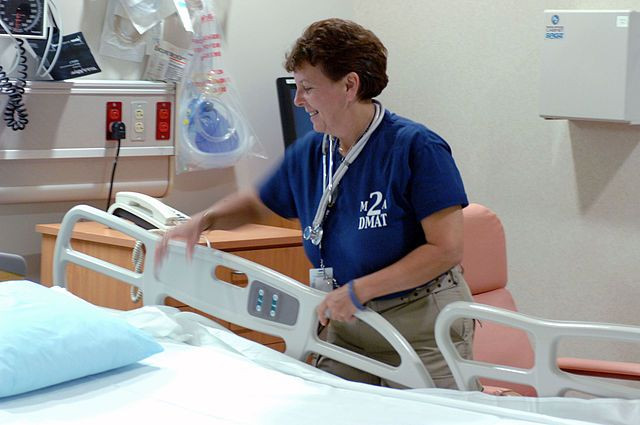Hospital Room Lighting May Contribute To Patients' Fatigue And Pain

Patients often complain of poor sleep while in the hospital and usually attribute the cause to the unfamiliar atmosphere. In a newly published study, Esther Bernhofer, Ph.D., R.N., of the Cleveland Clinic, and her research team decided to investigate a single environmental factor to understand its effects on sleep: lighting. They found that lighting patterns in hospital rooms are not appropriately aligned with normal sleep-wake cycles, and that this contributes to patients feeling not only more fatigue, but also more pain.
Light and Sleep
The team designed a study to better understand the relationship between mood, sleep, and pain experienced by a patient and hospital lighting. The investigators gathered data from 23 women and 17 men admitted to a large U.S. hospital between May 2011 and April 2012. Over a period of three days, the researchers continuously monitored both light exposure and sleep-wake patterns with wrist actigraph/light meters. Daily, they gauged each patient’s mood by using questionnaires, including Profile Of Mood States Brief Form, while each patient’s perceived pain level was determined based on medical records. What did the team discover?
The hospitalized patients did not get enough variation of light — mainly their rooms were continuously and dimly lit — to support normal sleep-wake patterns. A natural fluctuation between bright and low light is needed to sync up with natural circadian rhythms. In general, the patients slept very poorly, and they felt more fatigued because they had been exposed to not enough light during the day. This impacted their experience of pain: the more tired they felt, the more pain they felt.
“Future intervention studies should include investigating different ‘doses’ of light exposure for medical inpatients,” Bernhofer stated in a press release. She believes that lighting interventions might offer “unique, cost-effective ways to more effectively address the problems of sleep-wake disturbances, distressed mood, and pain in hospitalized patients, providing for overall better patient outcomes.”
In an unrelated study, a team of Boston researchers were similarly interested in the sleep experience of hospitalized patients, but they focused on the interaction between sounds and sleep physiology.
Sound and Sleep
“Sleep plays a critical role in maintaining health and well-being; however, patients who are hospitalized are frequently exposed to noise that can disrupt sleep,” wrote the authors in their study. To understand the effects of acoustic disruption, they designed an experiment that examined arousal responses during sleep to typical hospital noises.
The researchers recruited 12 healthy participants for a three-day polysomnographic study conducted in a sleep laboratory. After patients slept through an undisturbed night in the sleep lab, they then slept through two nights where the researchers simulated 14 sounds common in hospitals (for example, voice, intravenous alarm, phone, ice machine, outside traffic, and helicopter). The sounds increased in decibel levels during specific sleep stages; meanwhile, the researchers measured encephalographic arousals during rapid eye movement (REM) sleep and non-REM (NREM) sleep stages two and three.
“Sounds during sleep influence both cortical brain activity and cardiovascular function,” the authors wrote, conceding that since their participants were all healthy, their findings may underestimate the effects of noise on the sleep of hospitalized patients.
Nevertheless, they noted the volunteers’ arousal responses varied depending on sound level and type as well as sleep stage. The type of sound contributed greatly to differences in arousal, with electronic noises, moreso than voice or any other sounds, being the most arousing. Noises during NREM stage three were less likely to wake the participants than noises occuring during NREM stage two.
When presented during REM sleep, the type of sound mattered less than during NREM sleep — the probability of waking a participant did not depend so much on whether a noise was electronic or human voice. Yet, sounds occuring during REM sleep caused a greater and more sustained elevation of instantaneous heart rate.
“This study systematically quantifies the disruptive capacity of a range of hospital sounds on sleep, providing evidence that is essential to improving the acoustic environments of new and existing health care facilities to enable the highest quality of care,” the authors wrote.
Sources: Bernhofer EI, Higgins PA, Daly BJ, et al. Hospital lighting and its association with sleep, mood and pain in medical inpatients. Journal of Advanced Nursing. 2013.
Buxton OM, Ellenbogen JM, Wang W, et al. Sleep disruption due to hospital noises: a prospective evaluation. Annals of Internal Medicine. 2012.
Published by Medicaldaily.com



























